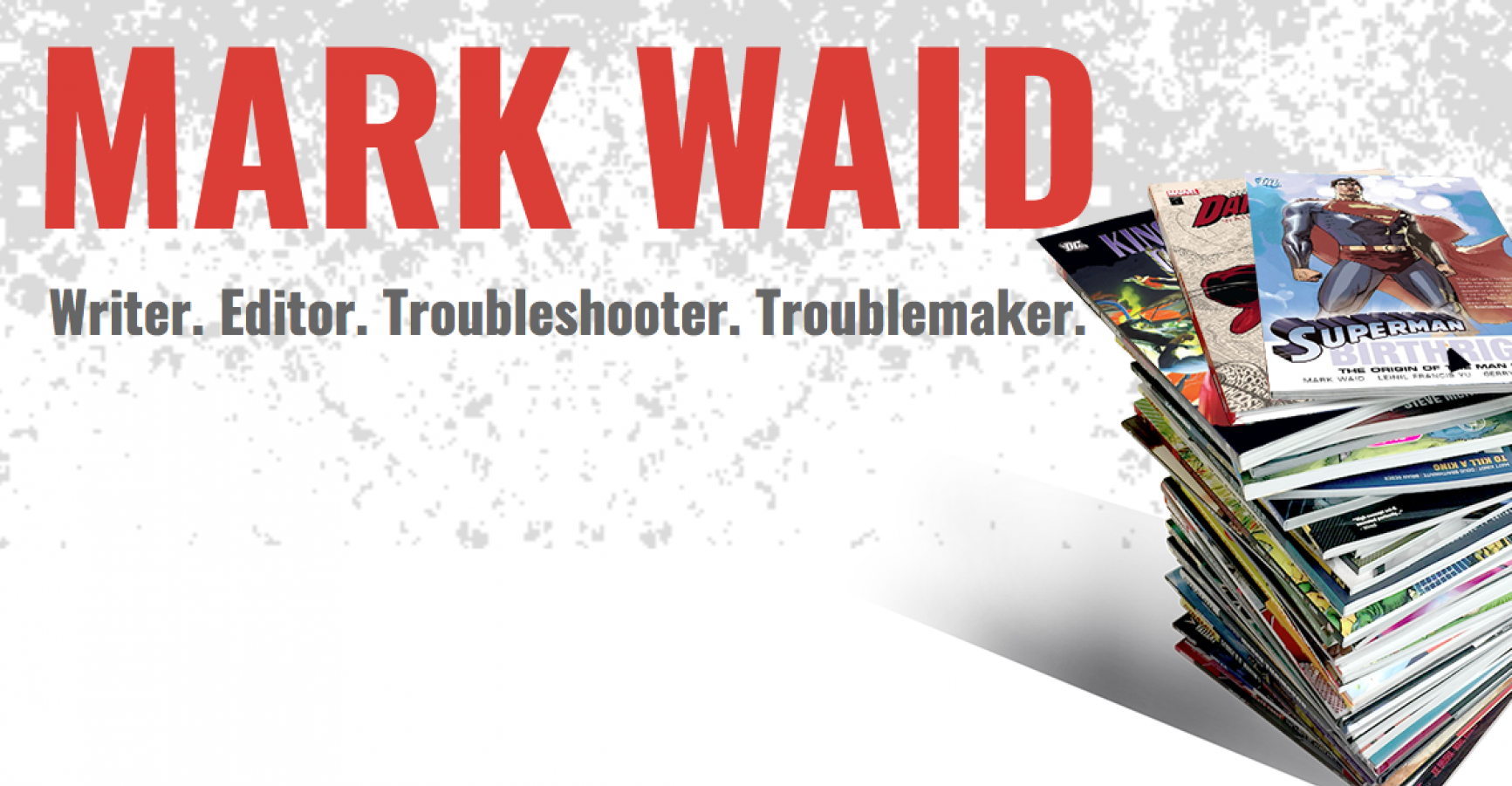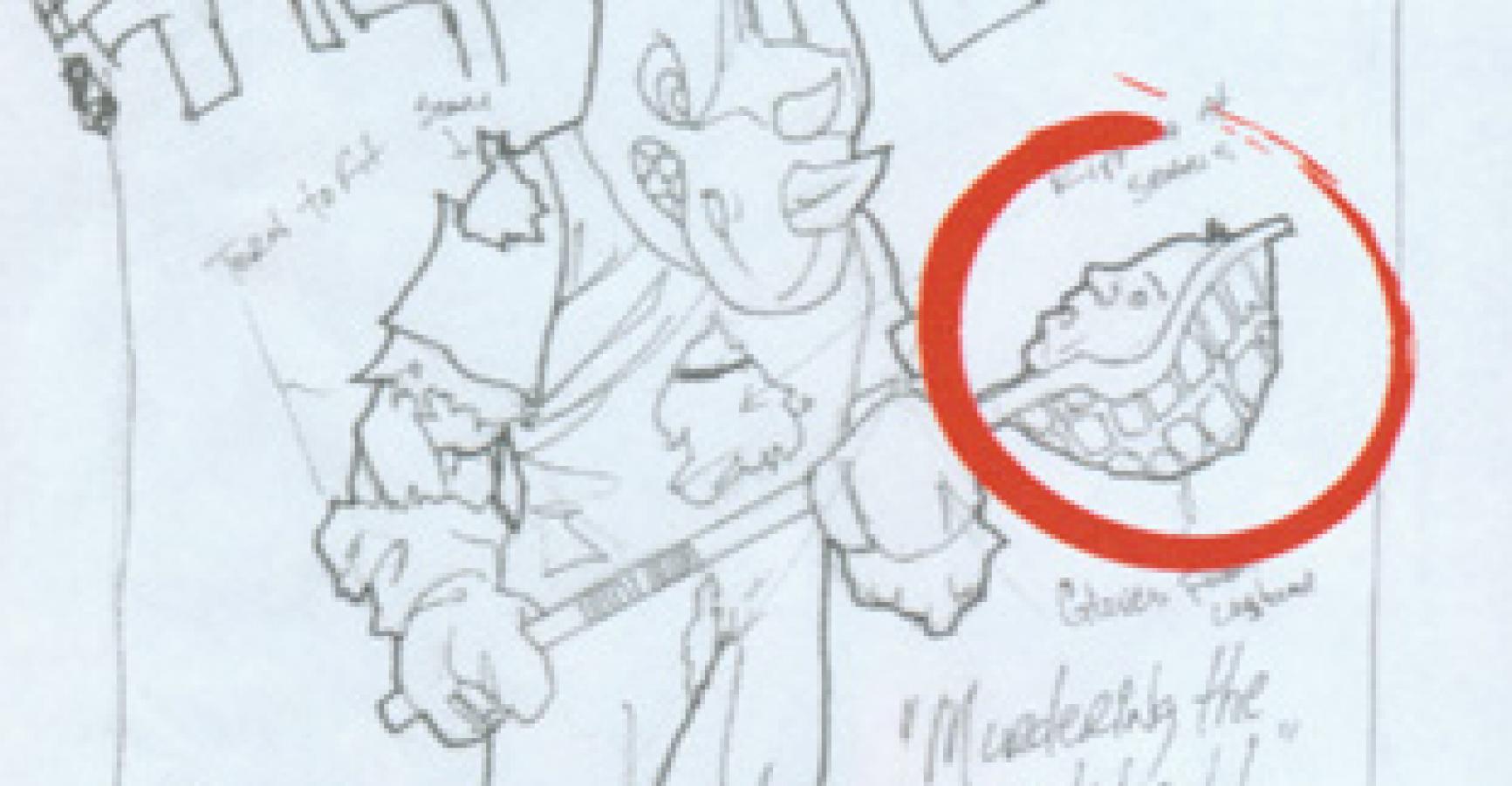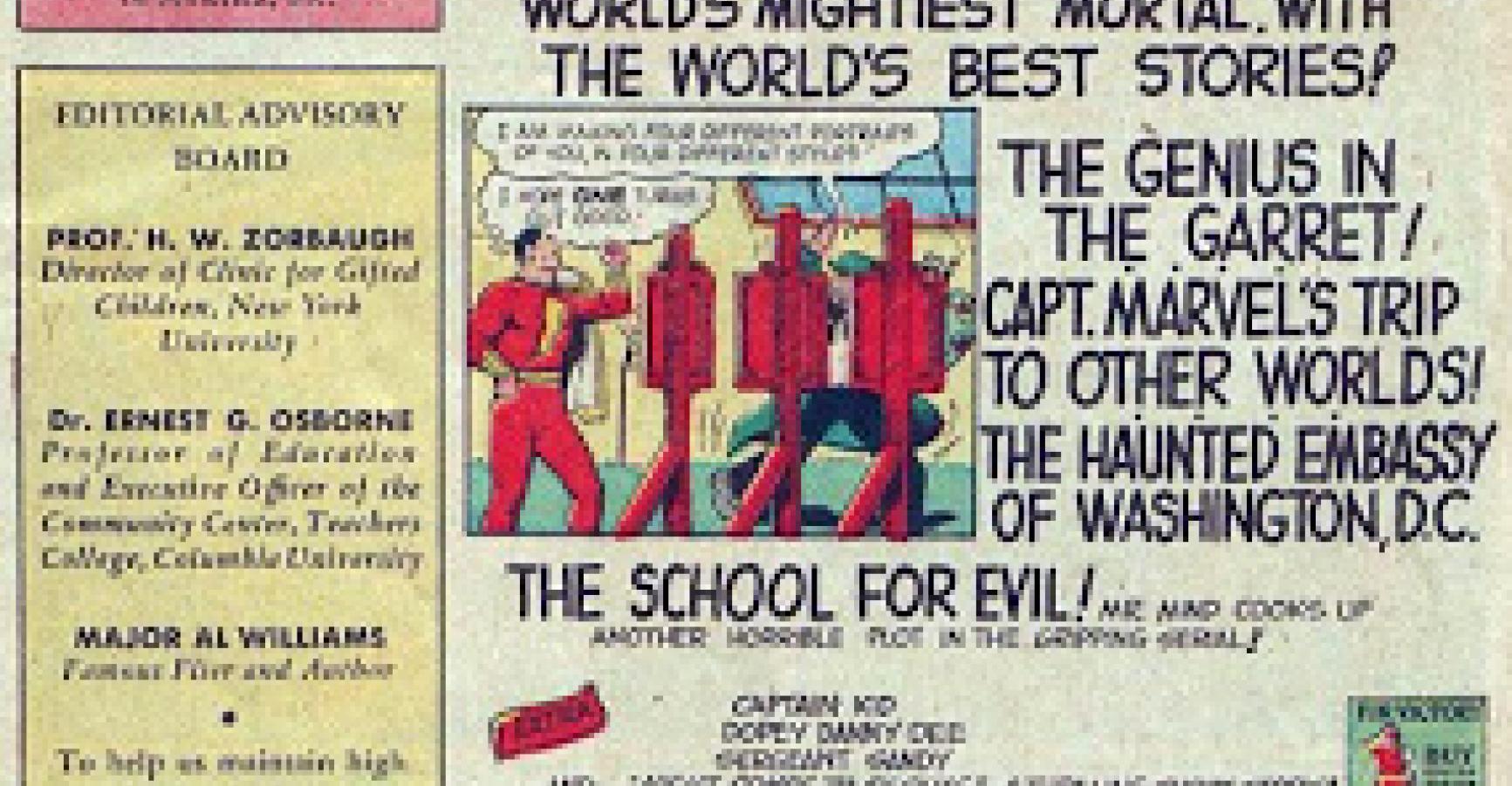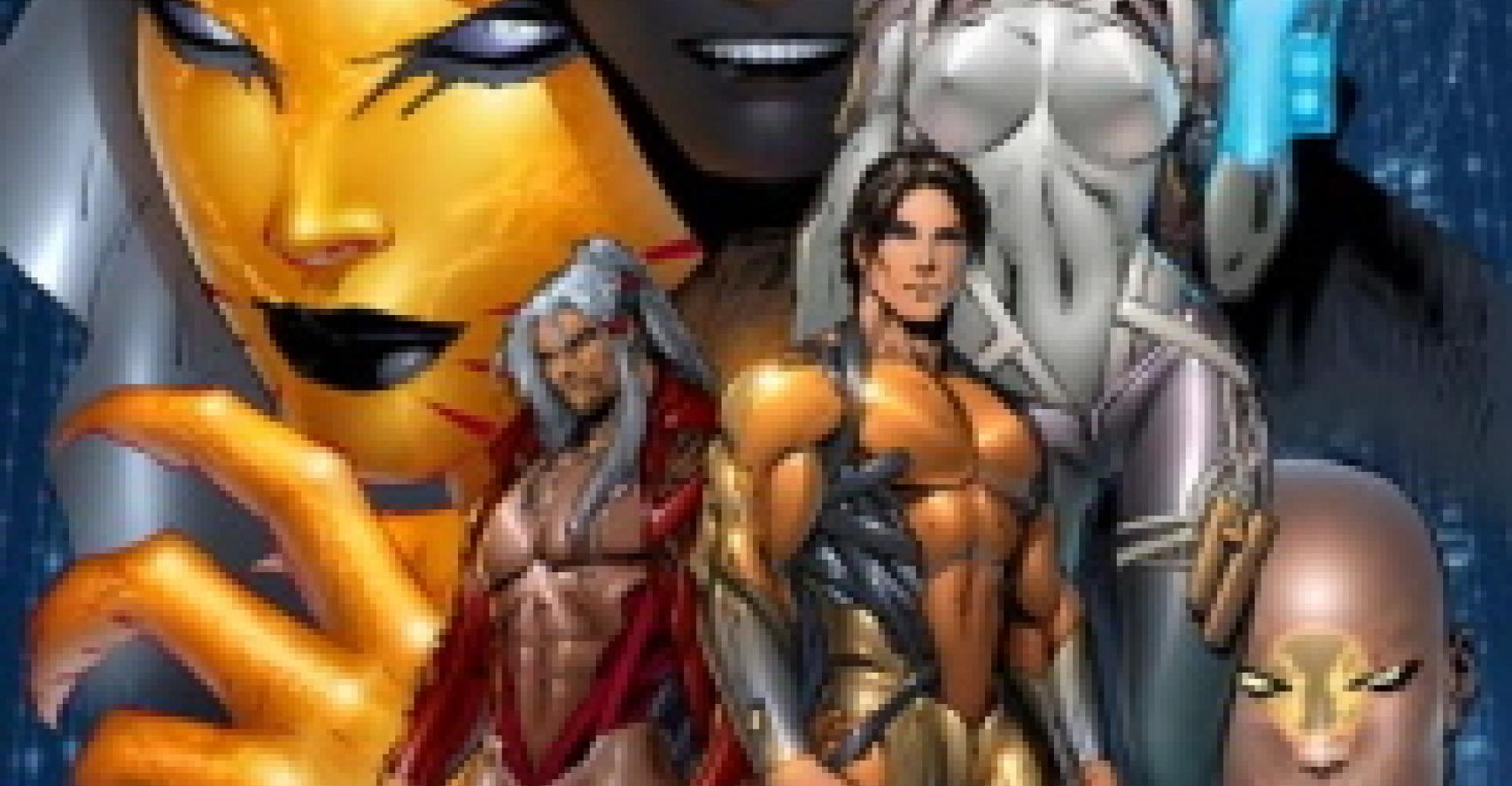Look, SOMEONE’s got to get this stuff out of the hands of the writers and artists and to press.
Comics editors, rumors to the contrary, are some of my favorite people, and I’ve always admired the good ones. In fact, when I broke into comics in the mid-’80s, I did so as an editor, at DC; I had little if any interest in being a comic book writer because I honestly thought I’d never be any good at it. That wasn’t my career goal at all. I just wanted to help steer my favorite characters and work with my favorite creators. I’d read a kabillion comics, I was organized, I was excellent at punctuation and spelling, and so I thought that would be enough to conquer the job.
Oh ho ho.
I lasted just over two years that first go-around and helped produce some really good and fondly remembered comics. I found some new talent like that James Robinson kid, and I enjoyed the gig. But I also, in my youthful arrogance, made a thousand dumb mistakes (like inadvertently pissing off Will Eisner–that was a red-letter day) and was eventually thrown out into the snowy New York streets. (Luckily, I seem to have recovered reasonably well.)
As I found out when I took the Editor In Chief gig at BOOM! in 2007, the job has transformed immensely in the intervening two decades because of digital delivery. During my first tour of duty, artists and writers worked via FedEx, colorists still slapped colored dyes on paper, hot dogs were a nickel, and everything was basically hard-copy. Now, scripts are e-mailed, art is scanned and uploaded to the FTP, lettering’s done with Adobe Illustrator, and in the entire time I’ve been at BOOM!, I’ve yet to have an actual, physical piece of art cross my desk.
That said, the core of the Comic Book Editor’s job is essentially the same as it ever was. The editor is the supervisor. The manager. The coordinator. S/he, when the system is running smoothly:
* sets the deadlines;
* makes the initial assignment to the writer (if work-for-hire–or coordinates delivery with the writer or writer/artist if it’s their property);
* reminds the writer a few weeks later that the script is running late;
* receives the script, reads it for content and continuity, and asks for rewrites if necessary, see below;
* ultimately copy-edits the accepted, final script and sends it to the artist;
* pokes a late artist about HIS deadline;
* receives the art via FTP;
* checks the art against the script to make sure they mesh and that the storytelling is clear, asking for redrawing if necessary, see also below;
* forwards the script and art FTP info to a colorist, sets a deadline, and provides him any necessary reference;
* indicates, on copies of the art, where the balloons, captions and sound effects should be placed (though if the script breaks all that down panel-by-panel well enough, most letterers today can handle that on their own);
* sends the script and the art FTP info to the letterer and sets a deadline;
* reviews the coloring for obvious errors (inconsistencies in characters or locales) and storytelling blunders (accidentally coloring night scenes as day, for instance);
* proofreads the whole project once again after the lettering’s done, checking the lettering placement and reading the whole book to make sure it all works now that it’s all of a piece;
* sends it out in this stage to the writer and artist for their review in case they want to tweak anything or may catch something you’ve missed;
* somewhere in the middle of all this, figures out what the hell the cover illustration should be;
* solicits a cover sketch (or several) from an artist to ensure that there’s room for trade dress and that the illustration’s not too similar to anything else in the pipeline;
* makes a final idiot check to make certain that, say, any two-page spreads fall on even-odd pages not odd-even or that the creative credits are included and accurate;
* notifies the publishing coordinator that the book’s ready to be sent to the printer;
* and, finally, checks the proofs when they come in a few weeks later to make dead certain that everything’s where it’s supposed to be.
Rinse, repeat.
On top of all this, editors have to process and stay on top of vouchers from the creative team, write up solicitation information for the sales catalog and try to work far enough ahead so they’re not having to guess or make stuff up, stay in constant phone and e-mail communication with the creative team to keep spirits up, assuage egos, manage deadlines, and more. I’m sure there’re a dozen other things I and other editors have to do every day that I’ve overlooked, but those are the big bullet points. In some ways, I think I’ve made it sound harder than it is, and in other ways, I can’t believe I or anyone could go through all those steps on nine or ten separate projects a month and not be driven insane.
And–AND–that’s just the nuts and bolts of it all. That’s a peek behind the curtain for those of you who have no inside knowledge already but are curious. Any orangutan who follows the above recipe can be an editor, but it won’t make him a good editor, because what makes a good editor is nowhere on that list.
What makes a good editor is staying the hell out of the way as much as possible.
As an editor, you’re there to facilitate the creative process, not impose on it. Yes, any time the writers or artists or colorists or letterers or anyone else wants to ask your advice or get a ruling on something, or anytime you feel like someone could be encouraged to do better, you have to be there for them. Have to be. That’s the job, whether the project is, say, BATMAN and creative types are serving as work-for-hire, or something the creators own and you’re serving them as a hired editor (as with, say, Steve Niles’s 30 DAYS OF NIGHT).
That’s much easier to do if the project is creator-owned and you’re just there essentially to keep the trains running on time. If, on the other hand, you’re a DC or Marvel or Dark Horse or BOOM! editor who’s assigning work, then if you did your job properly to begin with, then the people you’ve hired can be trusted to do what they do without excessive meddling. The less work you have to do, the more energy you can put into the million other things you have to do that day. The ideal situation you’re shooting for as an editor is to groom a collaborative creative team to the point where their work sails effortlessly through production and the most you have to do is fix the spelling and the commas.
If something bugs you at any point along the way–dialogue’s not clear to you, or that girl’s head looks too big, or whatever–yes, absolutely, speak up. But for the love of all that is holy, remember that the editor’s primary role is to help the creative team tell their story, NOT make them tell YOUR story. The best comics editors have the smallest egos. The worst ones feel like they have to justify their salaries by making changes just so they can leave their fingerprints. Every creative medium has those guys, and they’re all loathsome. If the creators don’t have a clear idea of what you’ve commissioned them to do, that’s your fault. And if they can’t do it to your satisfaction, then you’ve hired poorly and should fish the talent pool anew. It’s rare that, as an editor, you never have to step in at all to request some changes or clarifications, and that’s absolutely your right to do so, but know what you’re doing before you do it.
Here’s Mark Waid’s First Inviolable Rule For Editors, Including Himself: Never point out a problem unless you have a solution to offer. “This isn’t quite working for me, try again” is insanely unhelpful. Your solution doesn’t have to be “the” solution; you’re gonna talk it over with your writer or artist, you’re going to clearly articulate why something’s not working in your eyes, and then you’re going to listen to how they respond, negotiate the best fix if theirs is different, politic it out if they don’t acknowledge a problem, and be ready to dismiss your concern if they make a good case that they’re right and you’re wrong, because if you’re working with talented folks, that will happen. For years, I had a very good editor with one infamous trait: his bomb sights were off by about five pages. Without fail, every single time he’d call me up to talk about something in a script that bothered him, the problem was never exactly where he thought it was. The first few times we worked together, I’d listen to his criticisms and they wouldn’t make much sense to me, but every time we’d talk it out, we’d eventually realize that the problem was with an earlier or later scene. I got used to his rhythms, I’d hear “this scene seems off,” I’d think “actually, that scene’s fine, but if he’s bothered, that definitely means something’s wrong somewhere,” I’d figure out the appropriate fix, we’d both be happy. But the important point was that even though his sights were off, he was trying to articulate the problem, and that helped me zero in on it. “Eh, I don’t know what’s not working, take another swing” would not have been nearly as helpful.
Here’s Mark Waid’s Second Inviolable Rule For Editors, Including Himself: if you want something changed, it had damn well better make the story better, or else shut the hell up. “Wouldn’t it be cool if…?” are five words that are almost always more destructive than they are helpful. “Wouldn’t it be cool if this whole story were a flashback?” “Wouldn’t it be cool if you gave him a robot dog?” “Wouldn’t it be cool if you cut away in the middle of this Superman story to show Wonder Woman making a sandwich?” “Wouldn’t it be cool if you made this scene more like my favorite scene from Star Wars?” Answer: no. (Sub-answer: yes, all these things, and worse, have been said to me. Okay, not the sandwich, but the actual request was even stupider.) If you’re asking for changes without really, seriously understanding how those changes might affect the overall story, then stop talking. Also, if you’re in that twenty percent of comics editors who didn’t understand what I just said there, then please find another job. I’m not insisting that every script, every line, every drawing, every splash of color is somehow some perfect gem that can’t be meddled with; everyone creative in this field needs someone looking over his or her shoulder to make sure they’re not fumbling the ball, as we all do sometimes, and creators have to be willing to work collaboratively. But a good editor knows that the only changes worth championing are the ones that make the story better. If you’re an editor unable to defend your editing in detail, on those grounds, then you’re in the wrong line of work.
Whether they’re working on something that’s ultimately theirs or ultimately Time-Warner’s or Marvel’s, no one wants to feel like a typist or an art robot. Let them be creative; that’s their job. The editor’s job is to get their best work out of them or, if necessary, replace them if they’re not meeting the standards of the publisher. The first, last and only question is always: does this make the story better?



